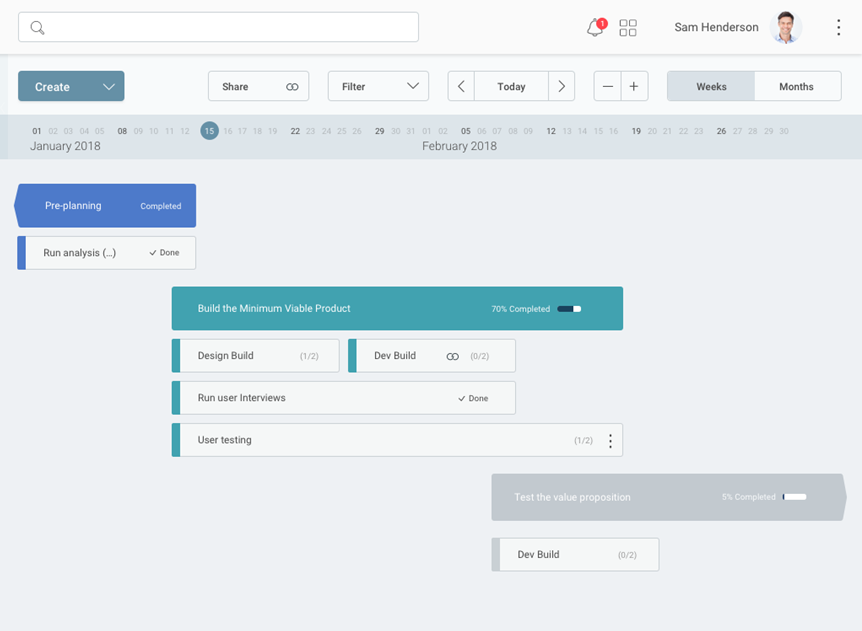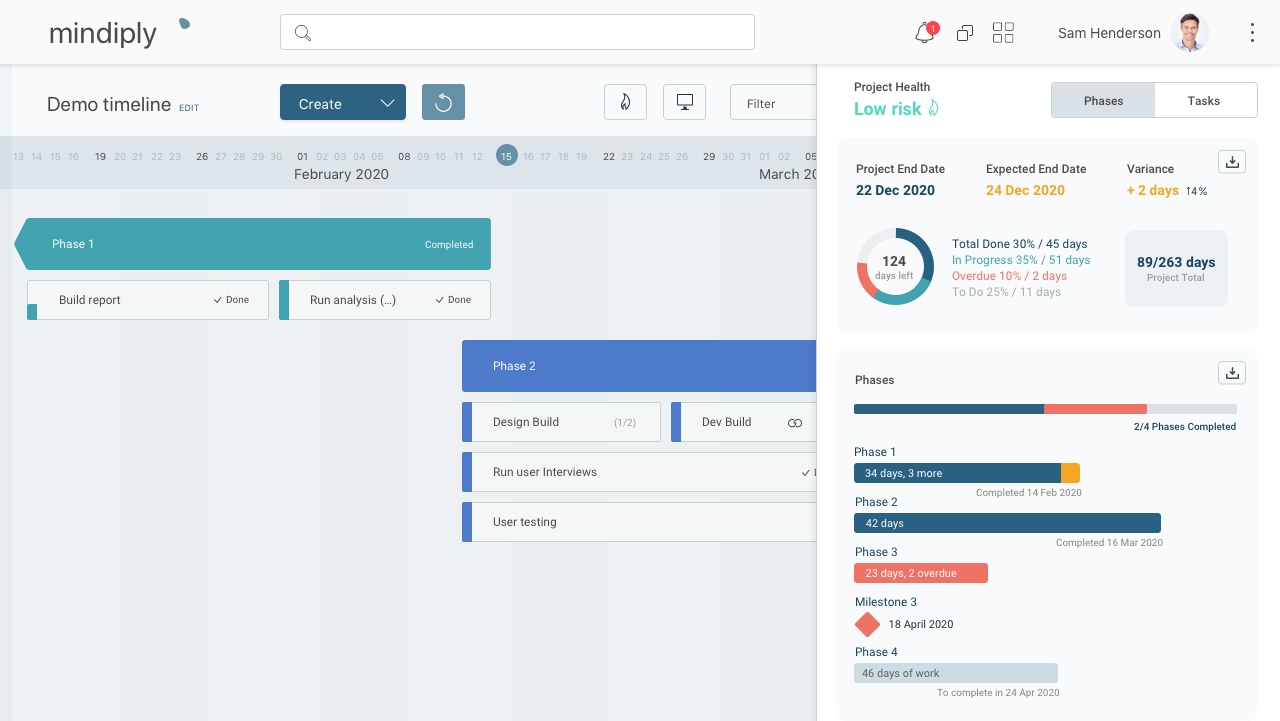
The Hidden Benefits of Timeline Project Management
Francesco Marcatto28 Jan 20
Table of contents
It’s true when they say that “time is a finite resource” and when it’s gone, well, it’s gone! For a project manager, the ability to manage time effectively could make the difference between a successful project or a monumental flop.
There are so many variables to consider when you’re effectively managing a project that if you don’t have at least ‘some grips’ on time management, you’ll quickly find yourself with your back against the wall, sweating nervously as the shadow of a deadline advances threateningly.
Many people take time management for granted. However, balancing deadlines and coordinating team efforts is an ability (both an art and a skill, some would say) that’s very hard to really master.
In this article, I’ll go through the hidden benefits of using visual timelines in project management (or just “timeline project management”), and we’ll see that being "Time-Line Efficient” can benefit the project’s bottom line in ways that are hard to realise.

From Abstract to Concrete
One of the key benefits of implementing project management timelines within your project is the visualisation of time. Time is an abstract concept for most. We say that “time is always moving” and “time doesn’t wait for anyone”, however since time isn’t really something we can physically possess or even see, the notion of time is something really hard to grasp and to manage.
When you take the elusive concept of time and plaster it onto a timeline chart (think about a Gantt Chart if you are more familiar with this kind of chart, see this article for more options), colour code the bars with corresponding activities, and voilà, time has become a concrete concept you can see and manage.
Moreover, by utilizing different colours to typify concepts like “urgency” or “risk”, you quickly communicate the need to increase effort in order to achieve the proposed goals. When you visualise time you create a dynamic ‘visual interpretation of time’ where everyone knows what’s going on without having to utter a single word.
Now that’s efficiency!
An Eagle Eye’s Perspective
How long are three months? “About 90 days”, says Captain Obvious, which is 100% correct. However, how long are 90 days? If you think it’s hard to tell, well, congratulations! You’re like everyone else on the planet!
“Ninety” (or “90”) once more is an abstract thought. We use numbers like this one it to represent a number of things, true, but a “90-day deadline” hardly prompts an adequate response.
However, when this abstract entity is visualised and people can physically “see” days and activities, everything becomes clearer. Thus, by adopting a timeline to represent the full scope of the project, a project manager helps to establish a common narrative within the team.
With modern online tools for project management it is super-easy to create and share project management timelines with your team and assign tasks to a specific team member.
This way, no longer are people “working in obscurity”. Everyone can see what’s expected of them and progress is measured in real-time and for everyone to see. This sort of social pressure is useful for inspiring your team members to be held accountable for their actions and it is actually good for team productivity.
No longer are you “working in obscurity” – progress is measured in real-time and for everyone to see. The subliminal social pressure is actually good for productivity.
However, poor time management can have the opposite effect.
How Poorly Managed Deadlines can ruin your project?
While social pressure can be a good motivational force within a project, mismanagement of time can be detrimental to group morale. Setting up unrealistic deadlines is the fastest way to kill team productivity and reach project management hell.
Initially, too strict deadlines lead to roof-high levels of stress, which in turn will make individual enter into a “fight or flight” state. The physiological stress response (ie. increased blood pressure, heightened senses and activation of the musculoskeletal system) is useful for making people work like crazy in order to keep up with the commitments, but over time it will take its toll. Low motivation, anxiety, and insomnia are just some of the many physical and psychological consequences of work-related stress.
And once your team gets the habit of missing one deadline after another, they’ll start to assign no value at all the deadlines you’ve set up.
From wearing down the enthusiasm and vitality of the team to killing productivity, the consequences of careless time management can be detrimental and hard to recover. This is why it’s absolutely important for project managers to set up realistic deadlines and ensure time flexibility, for example by including some buffer time between activities, so that any unexpected block won’t create on cascade a nightmare to everyone involved in the project.
Again, timeline project management can save the day. Break down big activities into smaller tasks and visualise their length (instead of just writing a number on an obscure document, eg., “two weeks”), these two tricks of timeline project management can greatly improve the accuracy of your time forecasts and reduce our natural tendency of being over-optimistic (the infamous Planning Fallacy).
The End Game
Another benefit that many people don’t talk about, is that “everyone always has the endgame in mind”. If you can ‘see where you’re going’ – you can get there. Of course, there may be hindrances along the way, but team dynamics shift dramatically when everyone knows what they are working towards.
They are able to focus on the important tasks, assist where necessary and work as a community to solve the problems of the team. However, this can only happen if everyone can see the big picture and the small pieces that will make it.
The visual timeline will show everyone “the endgame” and the path to reach it. It will be immediately clear what’s important to do (ie., the steps which will make you progress forward), but also what’s not so important to do (everything that’s not included in the timeline), allowing people to use their time far more efficiently.
The Bottom Line about Time…lines
Any experienced Project Manager knows the importance of being able to manage time effectively. This is especially true when you are managing long and complex projects or multiple projects simultaneously. It’s worth your time and effort to invest in a good online tool for timeline project management so that you and your team can work together for the greater good.

And in a world where “Time = Money”, time management is essentially money management. Except – you can always “make more money” but you can never “make more time”.
Time management cover picture created by pikisuperstar - freepik.com







